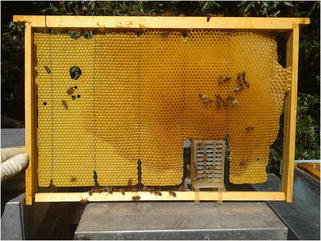Finman
Queen Bee
- Joined
- Nov 8, 2008
- Messages
- 27,887
- Reaction score
- 2,024
- Location
- Finland, Helsinki
- Hive Type
- Langstroth
Combination of thymol treatment (Apiguard®) and caging the queen technique to fight Varroa destructor
https://link.springer.com/article/10.1007/s13592-015-0408-4
Abstract
Guaranteeing high acaricide efficacy to control Varroa destructor is fundamental for colony survival. In this study, we verified the efficacy and impact of a commercial thymol-based veterinary product (Apiguard®) on colony honey bee populations when used alone or combined with the biotechnical method of caging honey bee queens to create an artificial brood interruption period in the colony. Apiguard® killed 76.1% of the mites while queen caging killed 40.6% of the mites. The combination of Apiguard® administration with queen caging killed 96.8% of the mites. Comparing bee numbers before and after treatment, Apiguard® treated colonies with caged queens had 48.7% fewer bees compared to before treatment, while Apiguard® alone reduced the number of adult bees by 13.6%. None of the treatments in the different groups resulted in elevated queen mortality.
Queen cage

.
https://link.springer.com/article/10.1007/s13592-015-0408-4
Abstract
Guaranteeing high acaricide efficacy to control Varroa destructor is fundamental for colony survival. In this study, we verified the efficacy and impact of a commercial thymol-based veterinary product (Apiguard®) on colony honey bee populations when used alone or combined with the biotechnical method of caging honey bee queens to create an artificial brood interruption period in the colony. Apiguard® killed 76.1% of the mites while queen caging killed 40.6% of the mites. The combination of Apiguard® administration with queen caging killed 96.8% of the mites. Comparing bee numbers before and after treatment, Apiguard® treated colonies with caged queens had 48.7% fewer bees compared to before treatment, while Apiguard® alone reduced the number of adult bees by 13.6%. None of the treatments in the different groups resulted in elevated queen mortality.
Queen cage

.
Last edited:















































